| DFG Research Unit FOR2692 | 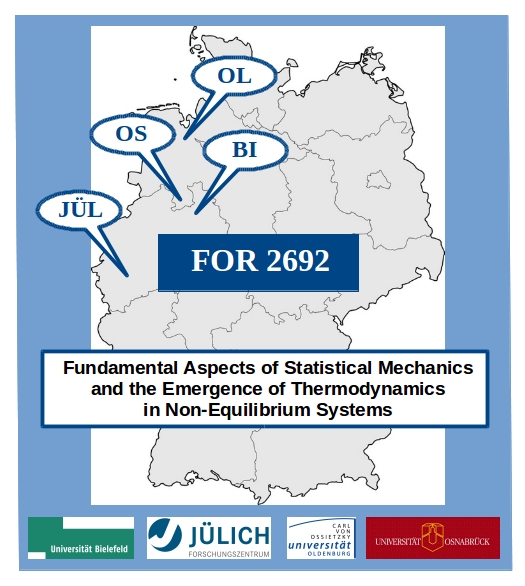
|
| DFG Research Unit FOR2692 | 
|
| 11:00 - 11:30 | 
| technical check for everybody (if you wish)
|
| 13:00 - 13:45 | 
| Frank Pollmann, TU München Far-from-equilibrium dynamics of systems with conservation laws
Recent years have seen a great deal of effort to understand
quantum thermalization: the question of whether closed quantum
systems, evolving under unitary dynamics, reach a state of
thermal equilibrium. In my talk, I will discuss how the presence
of conservation laws affects the dynamics of
thermalization. First, we investigate the dynamics of quantum
entanglement in systems with conservation laws and uncover a
qualitative difference between the behavior of the von Neumann
entropy and higher Renyi entropies. We argue that the latter
generically grow sub-ballistically in systems with diffusive
transport. We provide strong evidence for this in both a U(1)
symmetric random circuit model and in a paradigmatic
non-integrable spin chain, where energy is the sole conserved
quantity. Second, we introduce the dissipation-assisted operator
evolution (DAOE) method for calculating transport properties of
strongly interacting lattice systems in the high temperature
regime. DAOE is based on evolving observables in the Heisenberg
picture, and applying an artificial dissipation that reduces the
weight on non-local operators.
|
| 13:45 - 14:30 | 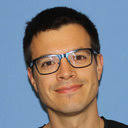
| David Luitz, MPI for the Physics of Complex Systems, Dresden Hierarchy of Relaxation Timescales in Local Random Liouvillians
To characterize the generic behavior of open quantum systems, we
consider random, purely dissipative Liouvillians with a notion of
locality. We find that the positivity of the map implies a sharp
separation of the relaxation timescales according to the locality of
observables. Specifically, we analyze a spin-1/2 system of size ℓ with
up to n-body Lindblad operators, which are n local in the
complexity-theory sense. Without locality (n=ℓ), the complex Liouvillian
spectrum densely covers a “lemon”-shaped support, in agreement with
recent findings [S. Denisov et al., Phys. Rev. Lett. 123, 140403
(2019)]. However, for local Liouvillians (n<ℓ), we find that the
spectrum is composed of several dense clusters with random matrix
spacing statistics, each featuring a lemon-shaped support wherein all
eigenvectors correspond to n-body decay modes. This implies a hierarchy
of relaxation timescales of n-body observables, which we verify to be
robust in the thermodynamic limit. Our findings for n locality
generalize immediately to the case of spatial locality, introducing
further splitting of timescales due to the additional structure.
|
| 14:30 - 15:00 | 
| coffee break
|
| 15:00 - 15:45 | 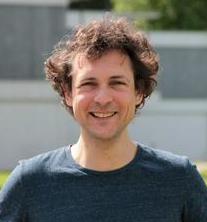
| Wojciech De Roeck, KU Leuven The many-body adiabatic theorem
In standard quantum mechanics, an adiabatic theorem follows from a spectral gap (or, alternatively, some smoothness assumptions).
In many-body theory, it turns out that the adiabatic theorem
does not automatically derive from a spectral gap assumption and
I will describe how one can state and prove an appropriate
adiabatic theorem.
Furthermore, I ask whether one actually needs a global spectral
gap or whether it can be replaced by a local one, in a
well-defined sense.
The answer turns out to be that a local gap is sufficient and I
elaborate on this point, leading to a certain type of
prethermalization result. This result is then related to some
recent work and to the occurrence of fractional transport in
Floquet systems.
This is based on joint work with Sven Bachmann, Martin Fraas and
Wen Wei Ho.
|
| 15:45 - 16:30 | 
| Sebastian Eggert, TU Kaiserslautern Floquet engineering and beyond
The active time-periodic driving of quantum systems has enjoyed
great interest,
since it opens the possibility to "Floquet engineer" novel
interactions and phases in modern experiments.
The theoretical technique will be illustrated using the
well-known example of the 1D Hubbard model with modulated
interactions
at high frequencies. We then go beyond the high frequency
expansion, where the numerical Floquet solution shows strong
resonances,
which can no longer be described by an effective model in the
original Hilbert space. Therefore,
such resonances pave the road for Floquet engineering of new
internal states as well as tunable dissipation,
which will be illustrated for selected examples.
|
| 9:30 - 10:00 | 
| technical check for today's speakers (if you wish)
|
| 10:00 - 10:45 | 
| Tatsuhiko Ikeda, University of Tokyo Nonequilibrium steady states in periodically driven dissipative quantum systems
The Floquet engineering, or controlling material
properties and functionalities by time-periodic drives,
is one of the forefronts of quantum physics of
light-matter interaction, but often limited to ideal
dissipationless systems. For the Floquet engineering
extended to a broader class of materials, it is vital to
understand the quantum states emerging in a balance of
the periodic drive and energy dissipation. This talk
consists of two topics: (1) a general description of
nonequilibrium steady states (NESS) for high-frequency
drives (Ref.[1]) and (2) time-crystalline NESS protected
by "symmetry" (Ref.[2]). In Topic (1), we discuss the
NESS in time-periodic Lindblad equation solved by the
high-frequency expansion technique. In Topic (2), we
introduce a new "symmetry" termed the Floquet dynamical
symmetry and show it leads to time-crystalline states.
|
| 10:45 - 11:30 | 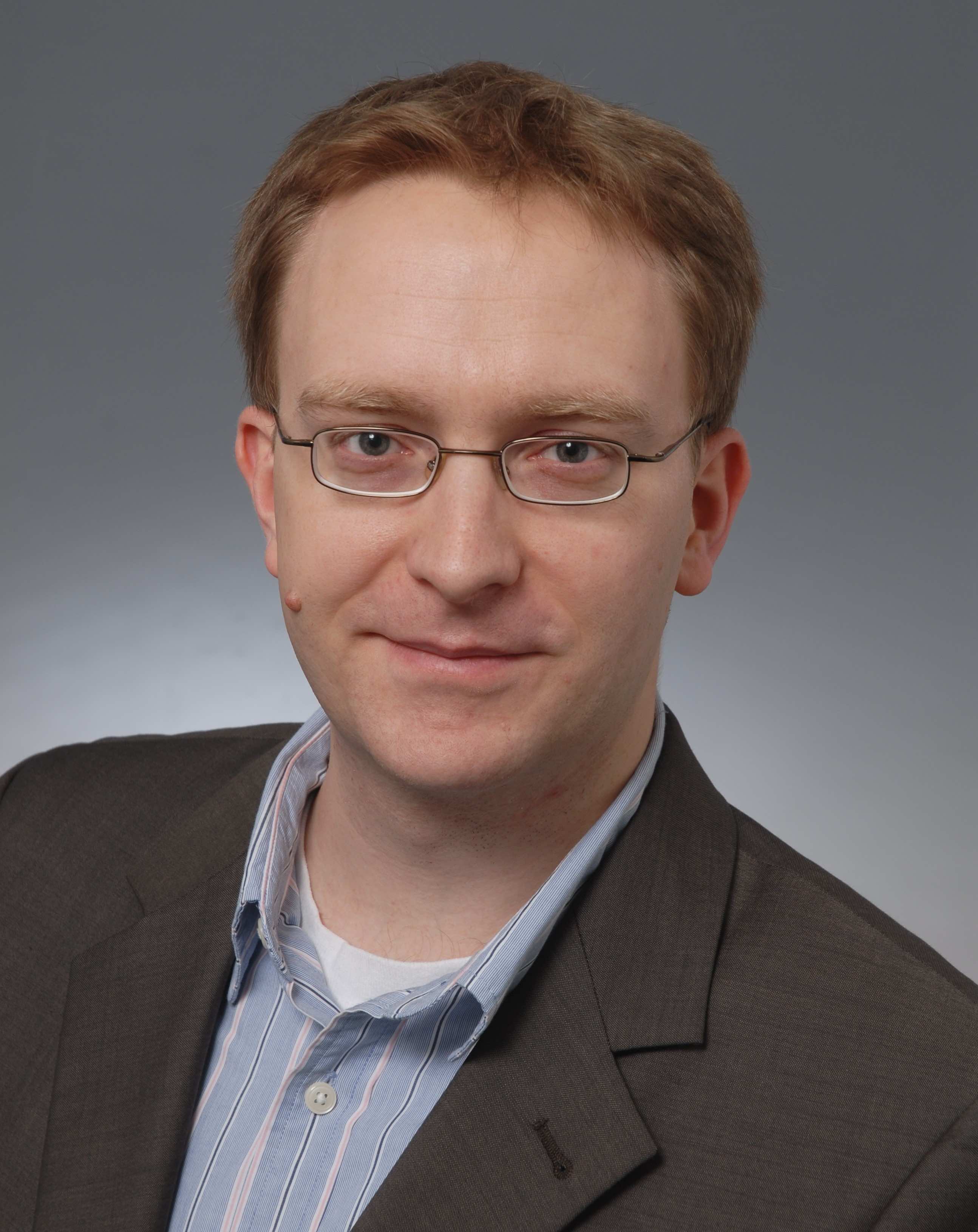
| Fabian Heidrich-Meisner, Georg-August Universitaet Goettingen Many-body localization in the Bose-Hubbard model from a single-particle perspective
While much work has provided strong evidence for the existence of a many-body localized phase
in one-dimensional systems of fermions or spin-degree of freedoms, there are still
open questions concerning bosonic systems. The larger local
state space allows for multiple-site occupancies which
may already favor localization. Then, bosonic systems
with disorder
exhibit a superfluid phase in the ground state in a larger
parameter space than in clean systems, leading to the
presence of an inverted mobility edge. Moreover, many
experimental
efforts studied bose gases in lattices rather than fermions.
|
| 11:30 - 11:35 | 
| conference picture (please turn your video on)
|
| 11:35 - 13:00 | 
| lunch break (zoom link will be provided)
|
| 13:00 - 13:45 | 
| Mari-Carmen Banuls, MPI for Quantum Optics, Garching Entanglement and energy variance
Generic eigenstates of non-integrable local Hamiltonians are
expected to fulfill an entanglement area law, a necessary
condition for their resembling (locally) thermal
equilibrium. For arbitrary pure states, which can be written as
linear combinations of these eigenstates, we may ask how much
entanglement is needed to reduce the energy variance, and how
small do we need this to be, in order to have local thermal
properties.
We have explored the relation between entanglement and energy
variance in a pure state, as the system size increases, for
local one dimensional Hamiltonians. Using a systematic
construction for matrix product states, we have found that a
polynomially increasing bond dimension is enough to construct
states with energy variance that vanishes with the inverse of
the logarithm of the system size. Our numerical results suggest
that these states, which can be constructed efficiently, do
converge to the thermal equilibrium in the thermodynamic limit,
while the same is not true if the variance remains constant.
|
| 13:45 - 14:05 | 
| Robin Heveling, Osnabrück University Modeling the Impact of Hamiltonian Perturbations on Expectation Value Dynamics
Recently it was advocated by several groups that a variety of
pertubations in condensed matter type systems may have "generic"
effects on the dynamics of expectation values [1,2,3].
We investigate this approach numerically and to some extend analytically, scrutinizing
various ways of modelling said generic effects.
|
| 14:05 - 14:25 | 
| Jürgen Schnack, Bielefeld University Internal decoherence and related phenomena
We investigate decoherence of subsystems if the
complete system is evolved according to the
time-dependent Schrödinger equation. The focus of such
research is on how to prevent decoherence or how to
achieve long coherence times. One option is the use of
clock transitions, i.e. transitions that are independent
of an external magnetic field (at least to some
order). In accordance with recent experiments [1], we show that such
transitions decohere indeed much more slowly than other
transitions [2]. In a second investigation we
demonstrated that a combined treatment of a system of
spins and a bath of phonons leads to entanglement
phenomena such as avoided level crossings that could not
be modelled by master equations [3].
|
| 14:30 - 15:00 | 
| coffee break
|
| 15:00 - 15:20 | 
| Mirko Daumann, Bielefeld University Many-Body Localization in Clean Interacting Diamond Ladders
The phenomenon of many-body localization (MBL) usually is seen
as a generalization of Anderson localization to interacting
systems and thus is discussed to appear in disordered
systems. There have been suggestions that MBL could also appear
in clean interacting systems without disorder, if other
mechanisms for localization are considered. One such possibility
are flat band (FB) systems, in which localization appears due to
the presence of dispersionless bands in the band structure.
In this talk we will discuss a clean quasi 1D diamond ladder,
which hosts a flat band. We present evidence that a flat band
induced MBL appears by showing that the eigenstate
thermalization hypothesis (ETH) is violated when FBs are
present. The results are underpinned by the time evolution of
observables that measure localization properties.
|
| 15:20 - 15:40 | 
| Marcin Szyniszewski, Department of Physics and Astronomy, University College London Measurement-induced transitions in random quantum circuits: from stroboscopic to continuous
Random quantum circuits are known to exhibit a
measurement-driven quantum phase transition from an ergodic
thermal phase to a nonergodic localized phase. We show that this
transition survives in an open quantum system setting with weak
(generalized) measurements [1]. We obtain a consistent phase
boundary in the space of the measurement strength and the
measurement probability, clearly demonstrating a critical value
of the measurement strength below which the system is always
ergodic, irrespective of the measurement probability.
While this entanglement transition is currently well established
for stroboscopic (discrete) measurements in random quantum
circuits, a crucial link to physical settings is its extension
to continuous observations, where for an integrable model it has
been shown [2] that the transition changes its nature and
becomes immediate. We demonstrate that the entanglement
transition at finite coupling persists if the continuously
measured system is randomly nonintegrable, and show that it is
smoothly connected to the transition in the stroboscopic models
[3]. This provides a bridge between a wide range of experimental
settings and the wealth of knowledge accumulated for the latter
systems.
|
| 9:30 - 10:00 | 
| technical check for today's speakers (if you wish)
|
| 10:45 - 11:30 | 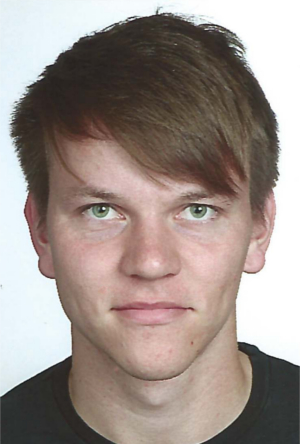
| Jonas Richter, Department of Physics and Astronomy, University College London The eigenstate thermalization hypothesis beyond standard indicators: Emergence of random-matrix behavior at small frequencies
We study matrix elements of a local spin operator in the eigenbasis of different
nonintegrable quantum spin chains. Our emphasis is on the question to what
extent local operators can be represented as random matrices and, in
particular, to what extent matrix elements can be considered as uncorrelated.
As a main result, we show that the eigenvalue distribution of band submatrices
at a fixed energy density is a sensitive probe of the correlations between
matrix elements. We find that, on the scales where the matrix elements are in a
good agreement with all standard indicators of the eigenstate thermalization
hypothesis, the eigenvalue distribution still exhibits clear signatures of the
original operator, implying correlations between matrix elements. Moreover, we
demonstrate that at much smaller energy scales, the eigenvalue distribution
approximately assumes the universal semicircle shape, indicating transition to
the random-matrix behavior, and in particular that matrix elements become
uncorrelated.
|
| 11:30 - 13:00 | 
| lunch break (zoom link will be provided)
|
| 13:00 - 13:45 | 
| Roderich Moessner, MPI for the Physics of Complex Systems, Dresden Quantum programming a discrete time crystal
Recent progress in the realm of noisy, intermediate scale
quantum (NISQ) devices represents an exciting opportunity for
many-body physics, by introducing new laboratory platforms with
unprecedented control and measurement capabilities. We explore
the implications of NISQ platforms for many-body physics in a
practical sense: we ask which physical phenomena, in the
domain of quantum statistical mechanics, they may realize more
readily than traditional experimental platforms. As a
particularly well-suited target, we identify discrete time
crystals (DTCs), novel non-equilibrium states of matter that
break time translation symmetry. These can only be realized in
the intrinsically out-of-equilibrium setting of periodically
driven quantum systems stabilized by disorder induced many-body
localization. We show that a new generation of quantum
simulators can be programmed to realize the DTC phase and to
experimentally detect its dynamical properties, a task requiring
extensive capabilities for programmability, initialization and
read-out.
|
| | |
| The URL of this site is http://obelix.physik.uni-bielefeld.de/~schnack/. | © J.Schnack, 22.09.2020 |